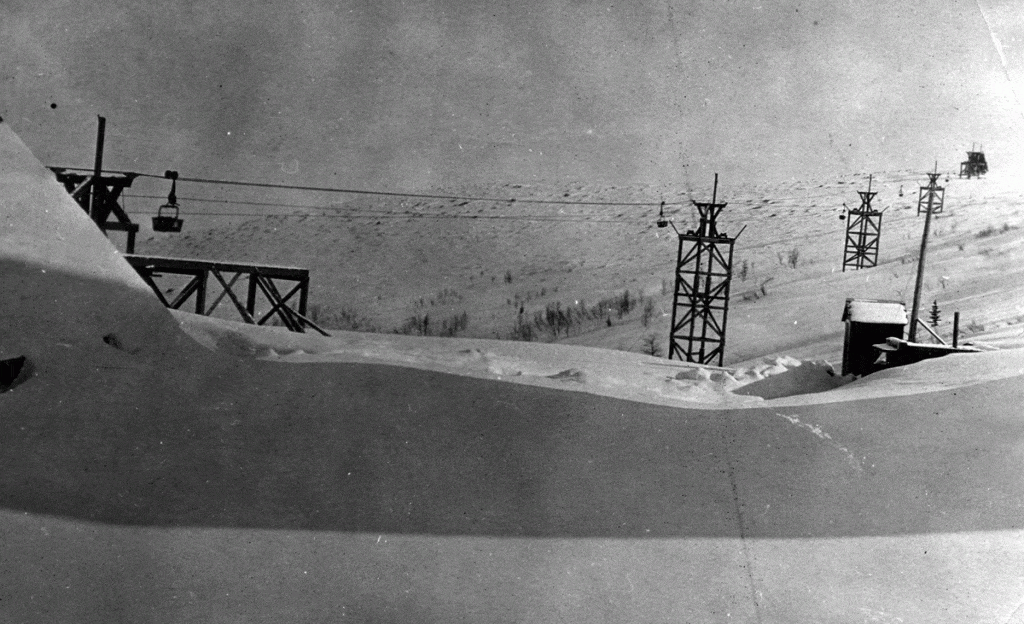Imagine this scene: it is winter 1916 and a heavy storm is dumping snow and ice onto the hillsides of Park City. A cave-in has just occurred at the Silver King Consolidated property and a miner has been injured and needs medical attention. But the roads are impassable and neither the doctor nor the patient can traverse them to get to each other. The situation might seem hopeless, but there is one more option: the aerial tramway.
Construction on the King Con’s aerial tramway had begun in the spring of 1916 and the system was up and running by that October. Like the tramways of its competitors, the King Con’s aerial transportation system saved the company “inestimable value,” according to the Salt Lake Mining Review, in shipping costs and the benefits of being able to keep the system open year-round.
Norman O’Brien, a “well-known miner,” was caught in a small cave-in December 22, 1916. The accident resulted in a “compound fracture of the left leg, just above the ankle,” according to the newspaper report published a week later. Though he would not have been able to walk anyway, the blizzard outside further impeded his and his colleagues’ efforts to get help. Word was sent to Dr. Snow, though he, too, faced impossible conditions through which to get to the mine complex.
The superintendent loaded Dr. Snow into a tramway bucket instead and sent him up the line. Upon reaching O’Brien, Dr. Snow was able to dress the injuries. “A comfortable couch [was then] arranged on top of one of the buckets,” and O’Brien “placed thereon.” The tramway then carried O’Brien “to the Park City Miners Hospital in midair.” Dr. Snow followed in the next bucket back.

Credit: Park City Historical Society and Museum, Himes-Buck Digital Collection
To say, as the Park Record did, that the experience was “unusual and somewhat novel for both doctor and patient,” seems a slight understatement. Though it was definitely “novel,” it was also likely, to a degree, terrifying. After all, the two men, one seriously injured, were in rickety buckets hanging high in the air in the middle of a blizzard.
All parties involved survived the experience. The record reported that, “the many friends of Mr. O’Brien will be pleased to know he is doing nicely and will be ‘good as new’ in a few weeks.” Norman O’Brien did recover from his injuries. He continued to work in Park City over the next year before taking contract work at the Cardiff mine in Big Cottonwood Canyon. O’Brien, his wife Lizzie, and Lizzie’s daughter Necy McClellan later moved to Ely, Nevada. In a sad conclusion to his story, however, both he and his wife died in December 1918, victims to the deadly Spanish flu pandemic.